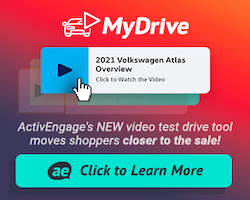In my years working for a dealer website provider, I was often tasked with keeping up with the latest trends in website design, particularly how they pertained to their value from a traffic and lead-generation perspective. Google was always my beat. It wasn’t an easy task since they put out about as much content in the form of blog posts, videos, and patents as any other non-news publication out there, but I enjoyed it because they rarely delivered messages that were crystal clear. It gave me the challenge of being an interpreter and the turmoil of the possible consequences if I was wrong. Call me a geek, but in many ways working the “Google beat” was exhilarating.
The search giant has been more forthcoming in recent years. One of their first very straight-forward recommendations was for responsive website design. They published many things about it back in 2012, including an article on their Webmaster Central blog titled “Responsive design – harnessing the power of media queries“. They reiterated it a couple of months later in their recommendations for smartphone-optimized websites.
At the time, my direction was clear. I recommended that my former company build responsive websites. It was the future, the near future in my opinion, and we needed to be early to the game. There were already a handful of companies going into the responsive realm in the automotive industry and I didn’t want us to be left behind.
Thankfully, we didn’t hop on the early bandwagon. There were challenges with responsive design that I didn’t anticipate. A car dealer’s website is different from most websites – heavy in images, loaded with plugins that may or may not be responsive, and generally slow. These were things that were not conducive to responsive websites and the early adopters did for responsive automotive websites what MySpace did for social media. They paved a path and stepped on the landmines. They showed that even as late as 2013, the challenges associated with switching to responsive were bigger than many had realized.
Today, things are better. After reviewing several responsive website options in our industry, I can say that one is rock-solid, one is pretty close to being there as well, and two are strong enough to be definitely better than their adaptive counterparts. It isn’t that our industry caught up to responsive technology. It’s that responsive technology, mobile internet speeds, and improved devices have finally caught up with what our industry needs for strong responsive websites.
Unfortunately, there are those who still trumpet the cause of adaptive over responsive. Whether it’s because they are too embedded in the adaptive model to switch or if they, like a couple of major website players that we all know and love, went into development, only to realize that it added costs that weren’t worth a wholesale switch, they’ve chosen to stay with adaptive for now and the foreseeable future. I’ve heard of companies that have it on their product roadmaps in 2015 or 2016 and at least one big one that has no plans of ever developing responsive websites. In all of these cases, it’s a mistake. Responsive is not just a buzzword. It’s where we are today. It’s where Google wants us to be. More importantly, it’s where your customers want you to be.
There was a time when I had to make the argument for flash websites. You remember those, right? Back in 2007, when I first came to the vendor side of the industry, I had to figure out how to properly optimize flash websites while maintaining the attractiveness they provided. I did this because I needed to; we were months away from developing a platform that wasn’t built on flash and we couldn’t wait around, so I needed a solution. Today, adaptive websites are in the same boat. Can they be optimized? Yes. Can they be effective for lead generation? Yes. Less than a year ago, the numbers were actually leaning in favor of adaptive websites over responsive when it came to lead generation and phone calls, but those numbers have reversed in recent months. Today, there is no excuse to avoid responsive other than cost. That’s really the best thing they have going for them. They’re cheaper.
If cost is an issue at your dealership, it’s understandable to go with a lower solution for now. However, at some point in the near future, the cost of saving money will be higher than the benefits that come with being frugal. Sooner or later, the majority of automotive websites will be responsive and they will be preferred over adaptive websites by your visitors. They are already converting better today.
Questions:
Can you afford to think that it’s just a buzzword?
What are some of the drawbacks that you’ve seen on your website or a competitor’s responsive website?
Should we even allow Google to determine how we will market to our customers?








